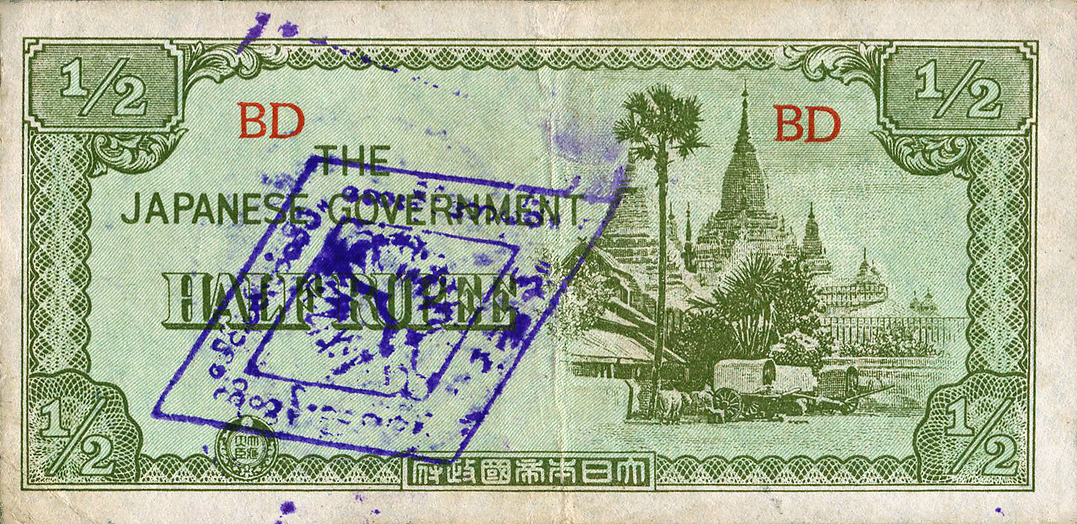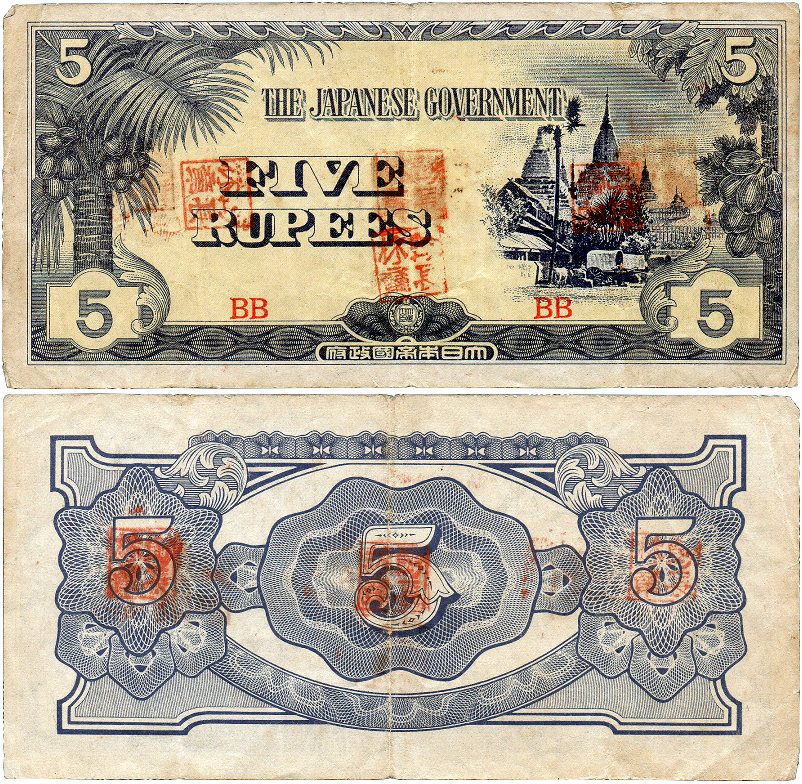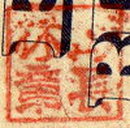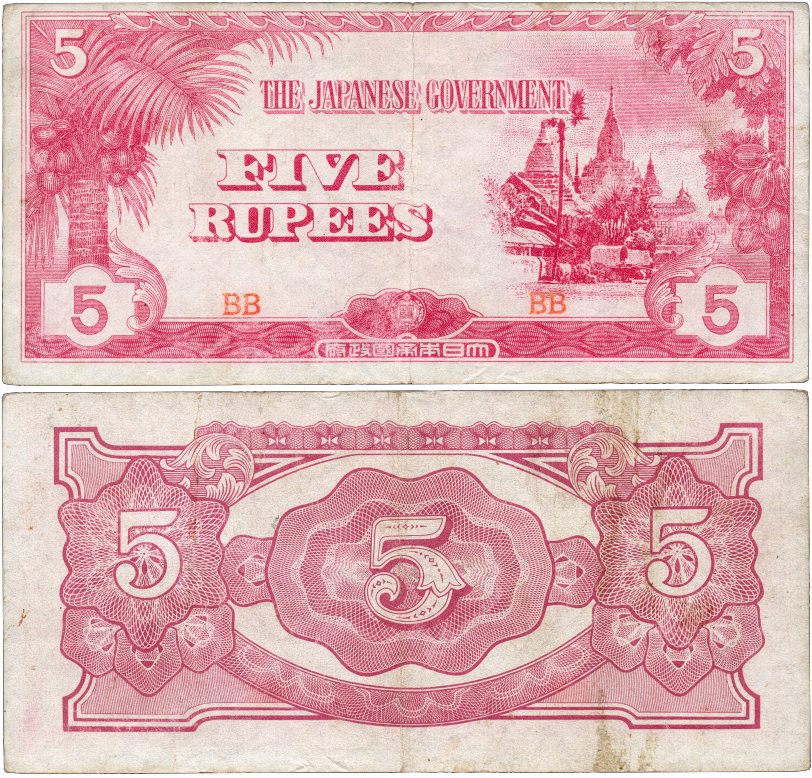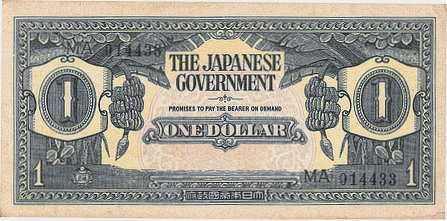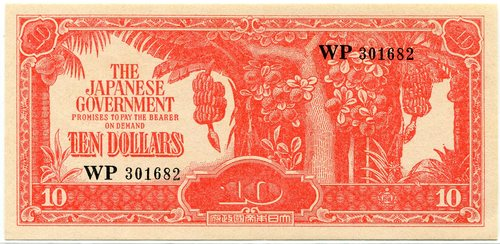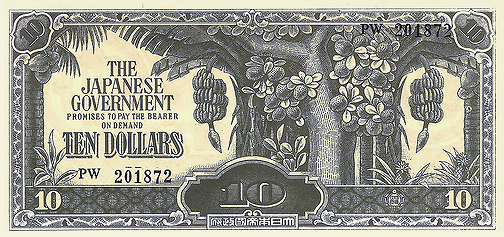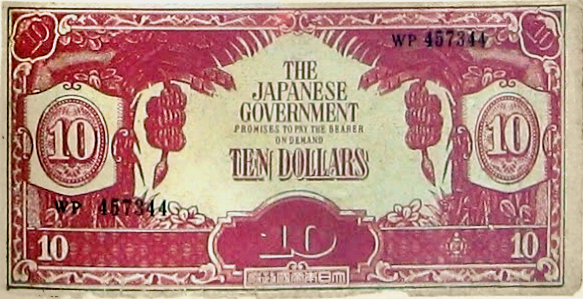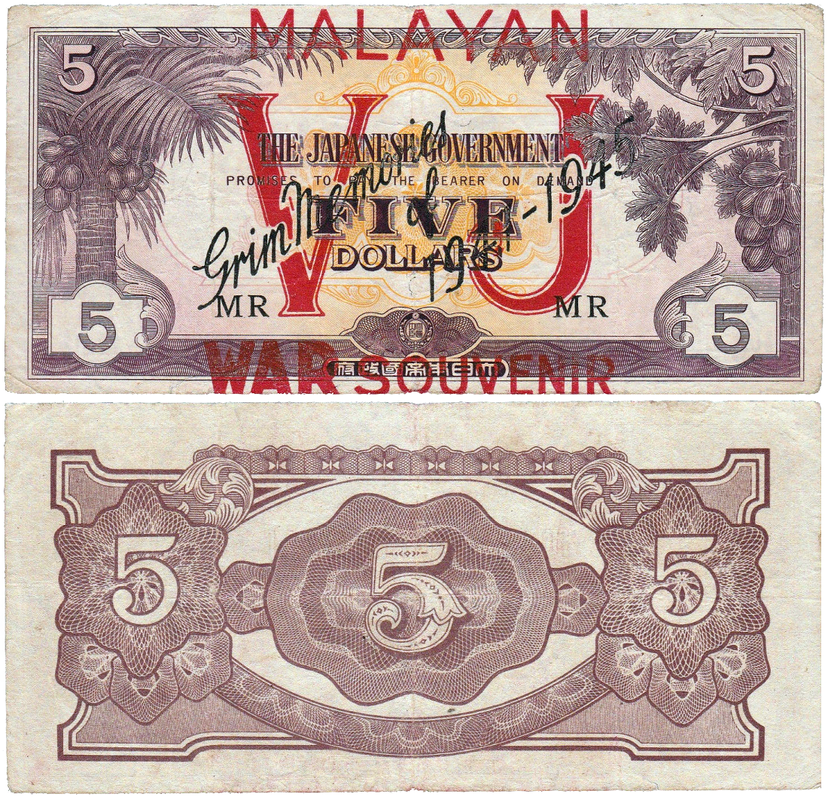Japanese Occupation Money 'Oddities' updated March 05 2017
Overprints, fakes and fantasies; new and old
The most commonly encountered oddities are inevitably the numerous fakes and fantasy-fakes, some intended to deceive collectors, others sold as cheap replicas for tourist souvenirs. Additionally there is at least one US parody of a Philippines occupation note which appears to have been produced sometime post-war for use in a boardgame.
Less common are the propaganda parody-forgeries which have had their design altered to carry several anti-Japanese political messages, and, genuine notes which have been altered with various overprints, some semi-official, some highly mysterious in origin and purpose. Examples are known with various political propaganda messages, with calenders, and various greetings. Again however some overprinted examples are modern additions to fool collectors
Less common are the propaganda parody-forgeries which have had their design altered to carry several anti-Japanese political messages, and, genuine notes which have been altered with various overprints, some semi-official, some highly mysterious in origin and purpose. Examples are known with various political propaganda messages, with calenders, and various greetings. Again however some overprinted examples are modern additions to fool collectors
Burmese items
Period overprints (genuine)
|
Right: a scarce example of a large commercial or more likely a governmental counter-stamp across the front of a 1942 1/2 Rupee. The text is Burmese and the central image is the symbolic peacock: "The peacock, the male peafowl, with its striking fanned tail of many eyes, is a symbol of "compassionate watchfulness" in Buddhist mythology. The green peafowl was the central feature of the Konbaung Dynasty’s flag and coins (1700-1885), becoming a popular nationalist symbol. The "dancing peacock" appeared on various flags from 1930 until Burma’s independence in 1948, when it appeared instead on banknotes, until 1966. The flag of Aung San Suu Kyi’s National League for Democracy (NLD) party features a golden fighting peacock, resembling a green peafowl with a tufted crest." |
|
Right: an unusual example of a chop mark repeated across the front and back of a 1942 5 Rupees. 'Manymore' (Gary) of the Coin Community Forum, has commented that: "...the character at the lower right of the seal is chang (長). The character at the lower left is zhang (章). Zhang means "seal" or "stamp". Unfortunately, the two characters at the top did not print well enough to identify. However, since the last character (zhang) means "seal", the other three characters must be a person's name or refer to his office or position. Chinese names usually have two or three characters. But during the war, it is not likely that a Chinese would be in a position to be stamping Japanese occupation notes. Japanese names, on the other hand, usually have four characters. No name would end with the character zhang ("seal" or "stamp"). This means the three characters (excluding zhang) are probably not someone's name. As already noted, the second to last character is chang (長). Names do not usually end in this character. However, the same character (長) can also also be pronounced zhang and has the meaning of "chief" or "head". I'm guessing that this is the meaning being used here. The stamp is thus the "seal" of the "head" of a government office or bank. The first two characters, which did not print clearly, would identify the organization." |
Malayan items
|
Malaya themed fantasy notes
Right: a selection of modern fantasy-forgeries of Japanese Occupation notes for Malaya; some more convincing than others. Some of these fakes may have some genuine age by now, depending on how far back these have been produced (I remember a reference that indicated that some of these may have first appeared back in the 1970s-80s but I'm not able to confirm this at present). As long as the collector is not deceived by these notes, they could be considered to have some curiosity value - at least the better examples. They have no 'real' value of course, unlike for example the period forgeries: produced by the Allies or the 'souvenir counterfeits' of Oceania notes by Australian businesses. |
|
VJ - Malayan War Souvenir overprinted notes These items were produced for British/US soldiers following the defeat of Japan, mostly using 5 Dollar notes of blocks 'MK' or 'MR'. On some examples the 'Grim memories of 1941 - 1945' is missing. This overprint is also found on some $10, $100 and $1000 notes however the authenticity of these is doubted by some. Modern fake overprints have been detected for the $5. There is an excellent study on WWII propaganda issues including these war souvenir notes on psywarrior.com |
